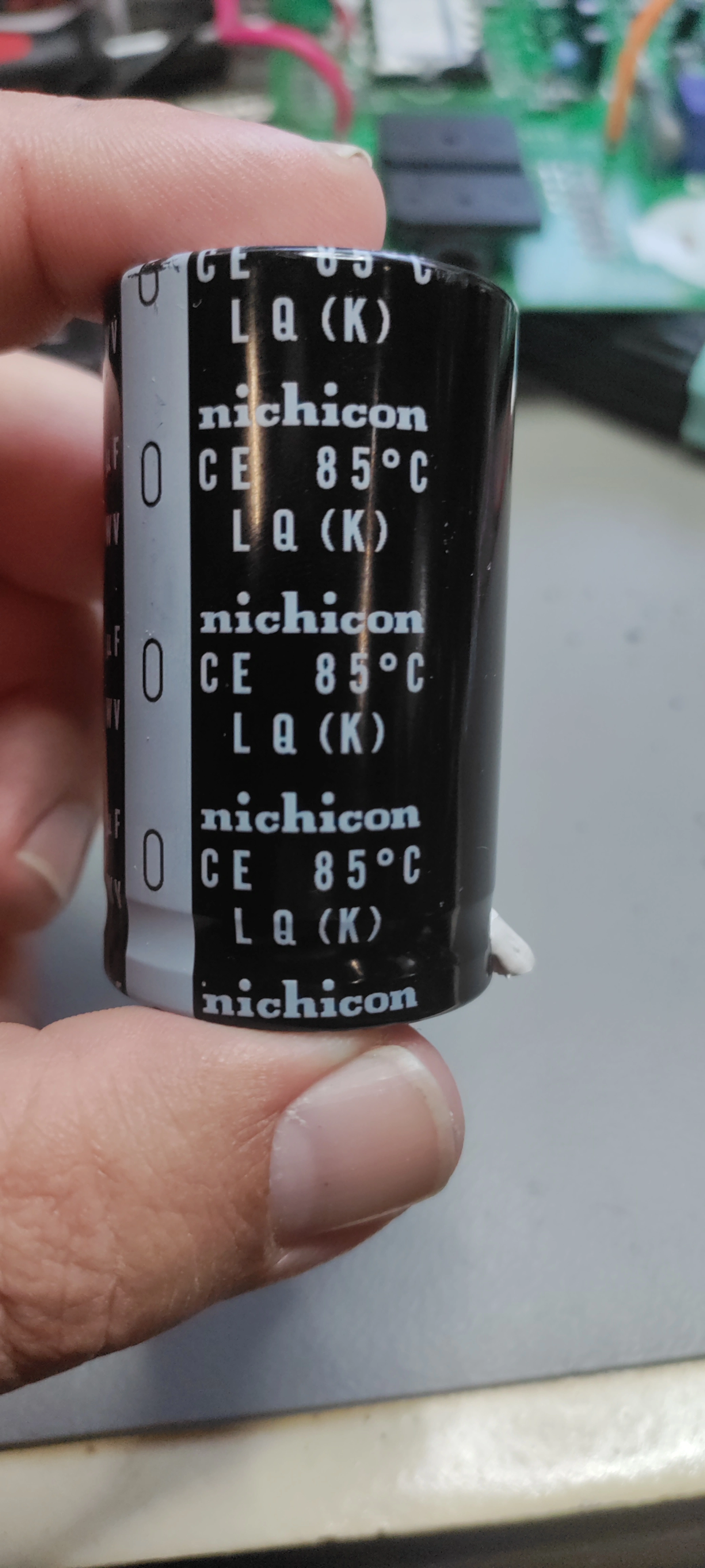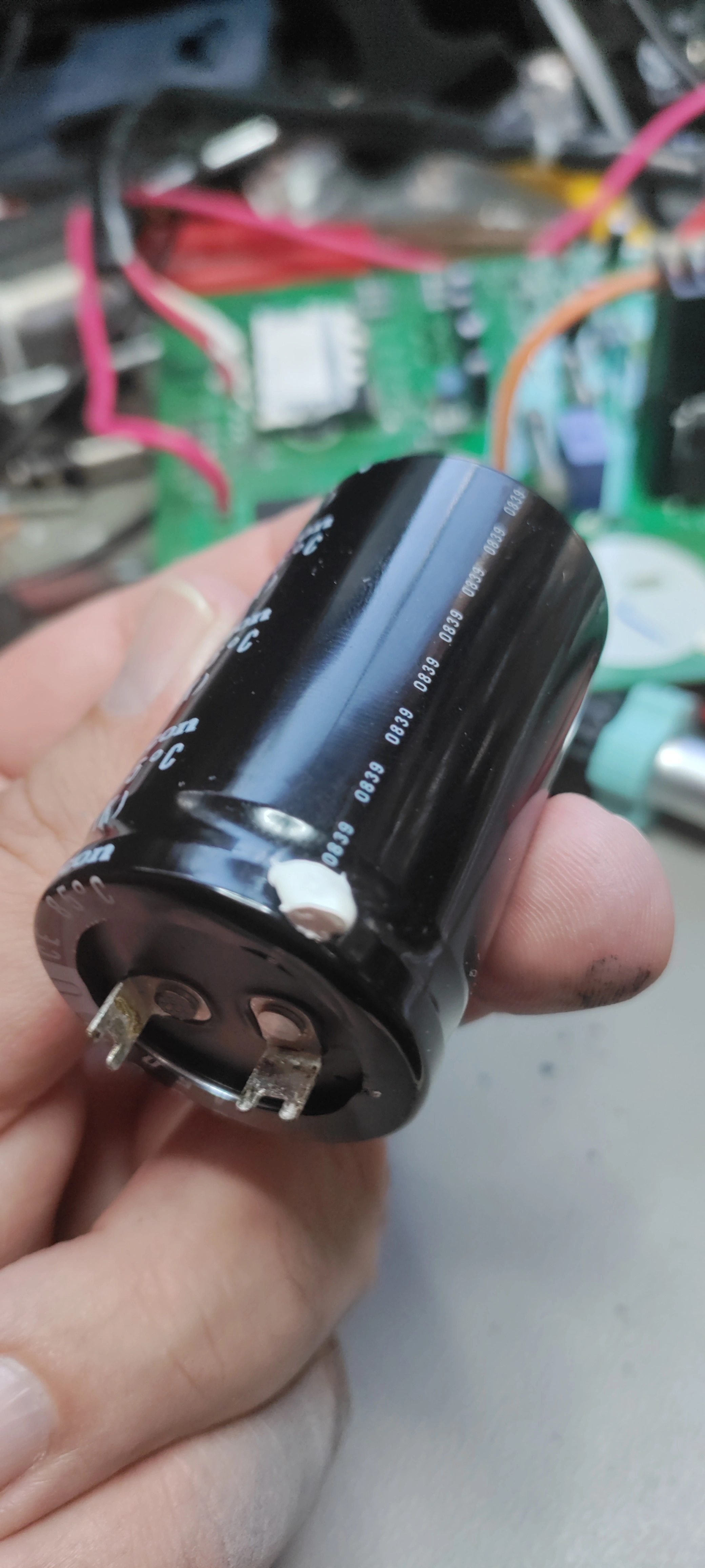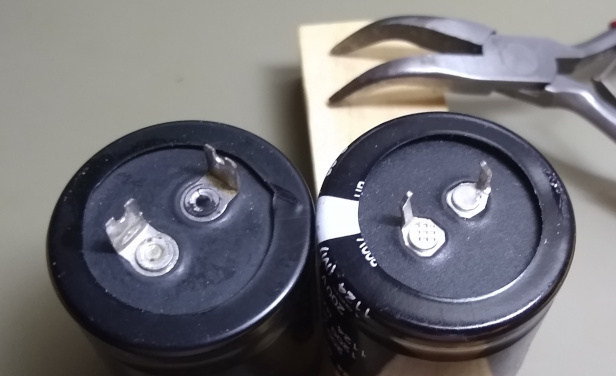Solution: @[email protected] has made some really insightful comments below, which are really useful. ~~If you just want the cap you can set the parametric searches for 660uF, or in September 2023 I've found that digikey stock(s/ed) chemi-con EKHJ451VSN661MA59M~~.
Update 2: Turns out that EKHJ451VSN661MA59M is not the ordering code you'll want. That would be EKHJ451LIN661MA59M which returns 0 results when you Google it, or maybe a single result in a few days linking to this thread. So it looks like you'd be better off just getting some 680uF with blade snapins instead and retrofitting the board if possible. Just make sure it can handle the ripple current. Always check ordering codes twice my friends!
Original post
I need help identifying the terminals on some strange caps found in an AC inverter main board. The reason I state the AC part, is that the only other mention I've found of this layout, was a question on digikeys forum regarding an AC inverter https://forum.digikey.com/t/can-t-find-the-right-terminals-for-a-capacitor/19332 The capacitor in question has the same measurements as the one in the link.
In my picture on the right you can see the layout of the terminals, there's room for three caps, but only two was mounted, hence the relatively clean pads. On the left is one of the two caps in question. It says nichicon LQ(K), 85°C. Nichicon has discontinued the LQ-series, and the datasheet doesn't mention a 660µF variant. I don't know what fujitsu did to get caps with capacitance outside the E24 series.
Question: What is the name of this type of terminals? And more importantly: where can you get 680µF 450V caps with them? I haven't found them on neither Farnell or RS-Online.
For the sake of people googling this in the future, the AC in question is a fujitsu AOYS09LDC and the board was marked K05CM-C-A(03).



